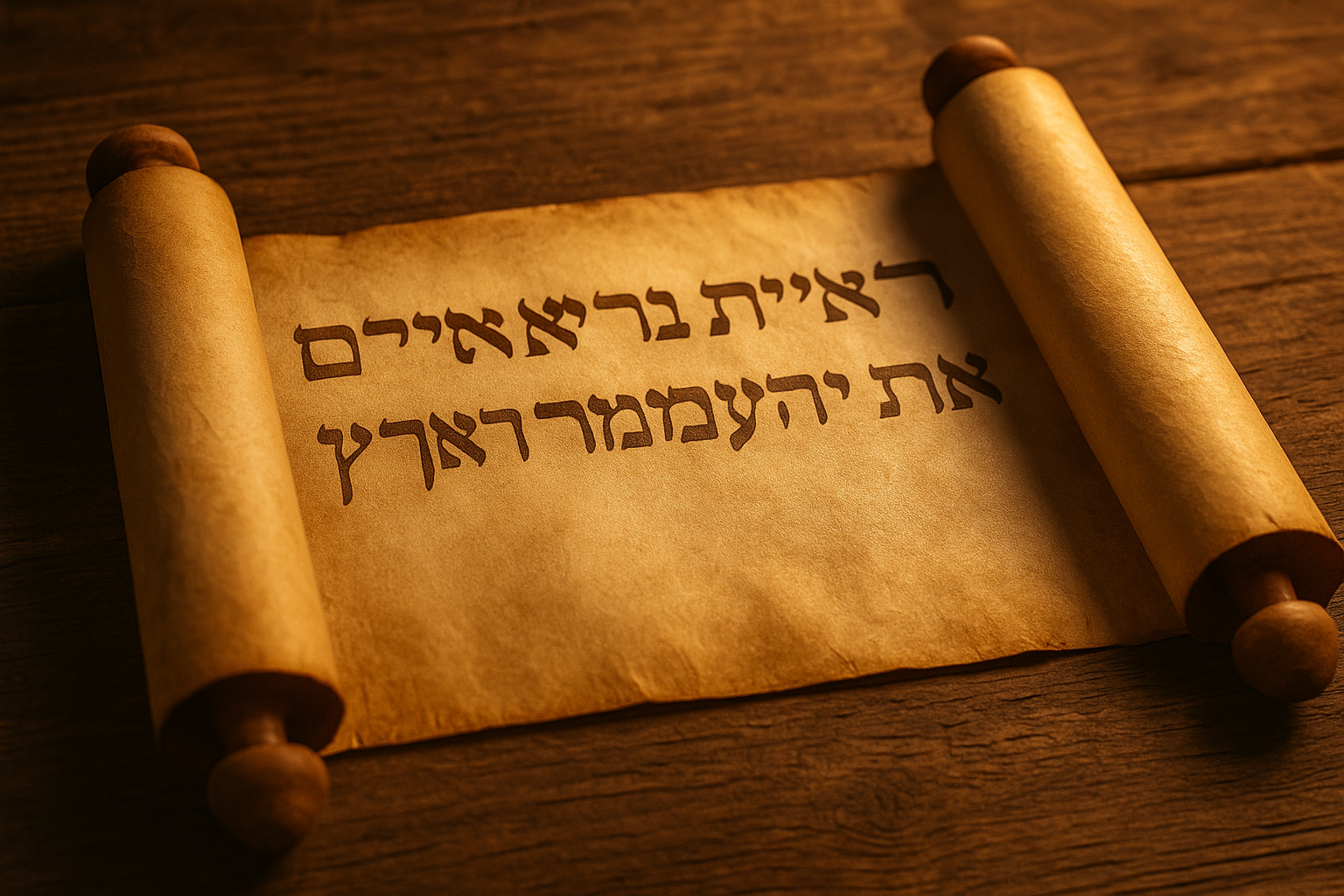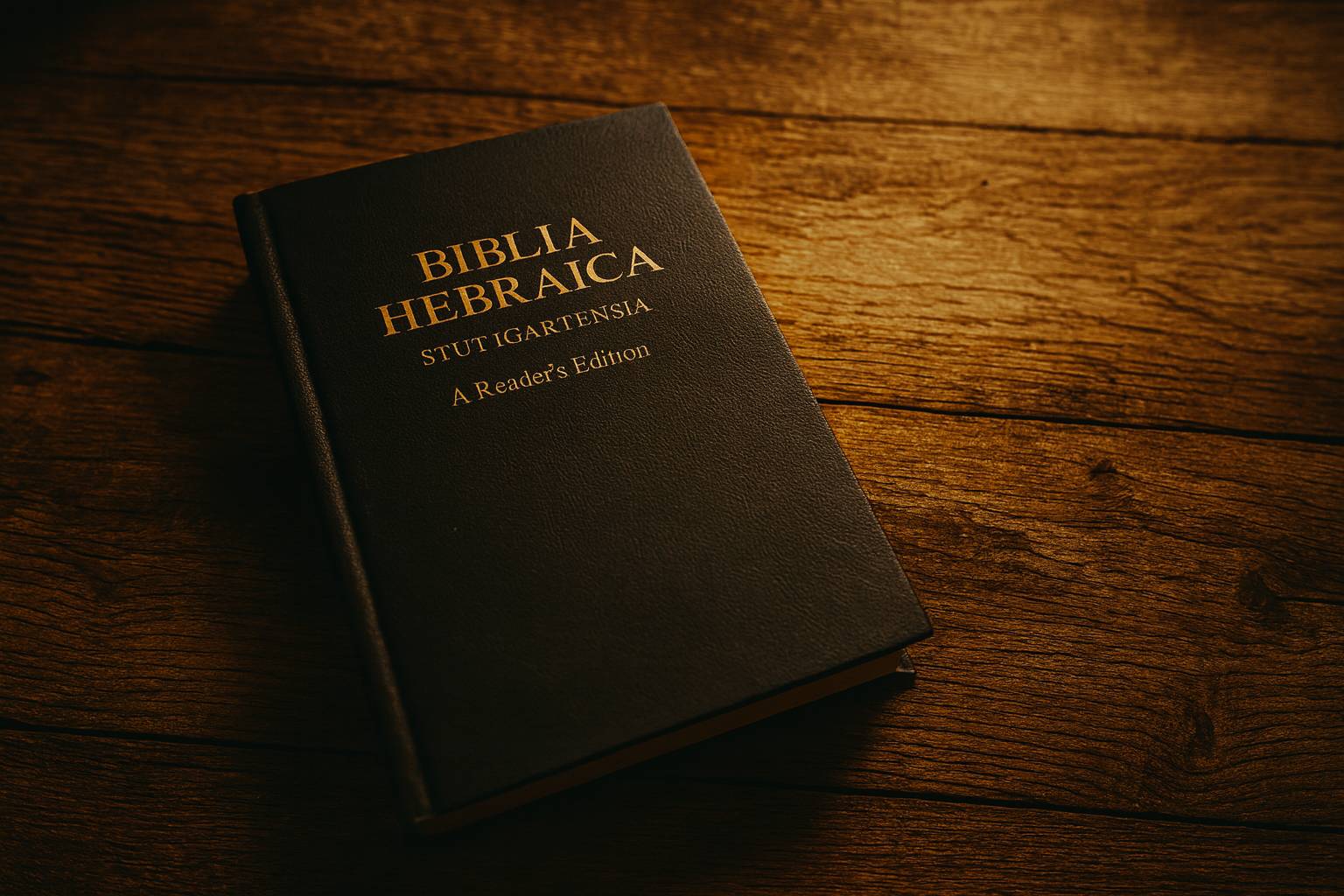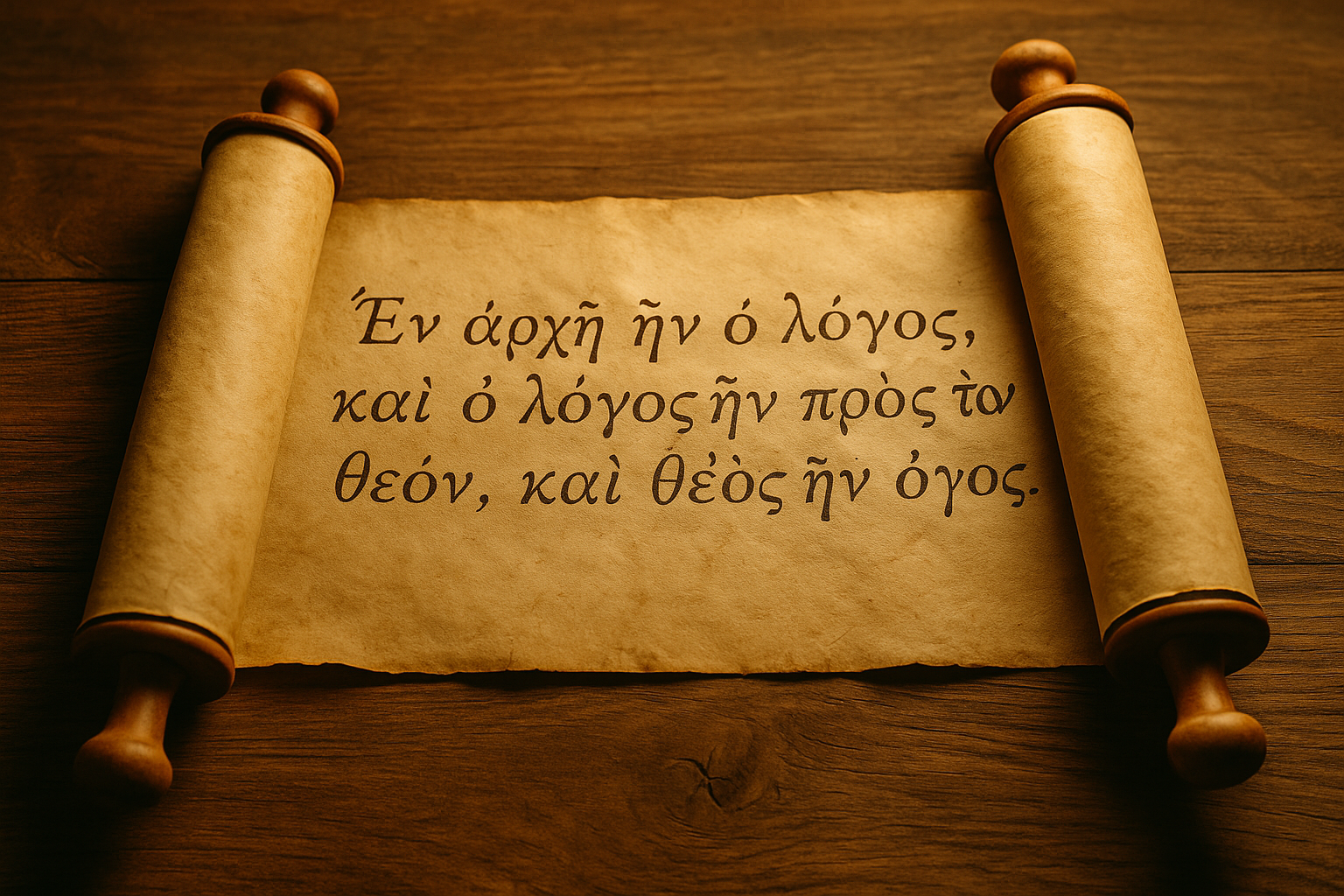The Manuscripts Behind The Bible
When we talk about Bible translations, we’re really talking about the ancient manuscripts underneath them. These are the Hebrew and Greek texts that scholars use as their “starting point” before translating into English. Here’s a quick look at the main ones our chosen translations draw from:
An Ancient Scroll unrolled, showing Genesis 1:1 in Hebrew
Ancient Hebrew & Greek Scrolls
The Old Testament, written in Hebrew with some portions in Aramaic, and the New Testament, written in Greek, form the foundational texts of the Bible. These early copies spread through Jewish synagogues and Christian churches.
The Dead Sea Scrolls, discovered in 1947, are Hebrew manuscripts from 200 BC to 100 AD that confirm the accuracy of the Masoretic Text.
The Masoretic Text - Hebrew Old Testament
The traditional Hebrew text of the Old Testament was carefully preserved by Jewish scribes known as the Masoretes between the 6th and 10th centuries AD. The Masoretes didn’t just copy; they added vowel markings, punctuation, and marginal notes to ensure the text remained accurate and could be read aloud correctly.
Even today, the Masoretic Text remains the most reliable basis for the Hebrew Old Testament. The Dead Sea Scrolls (discovered in the 20th century) confirmed just how carefully it was preserved.
Biblia Hebraica Stuttgartensia, teaches the Hebrew foundation of the Old Testament
Biblia Hebraica Stuttgartensia
A modern printed edition published in Stuttgart, Germany, of the Masoretic Text. It became the scholarly “standard” Hebrew Old Testament for translators in the late 20th century. It doesn’t just give the Hebrew words; it includes a critical apparatus — notes at the bottom that show where different manuscripts have tiny variations. The Biblia Hebraica Stuttgartensia was published between 1967 and 1977 and is still widely used, though the Biblia Hebraica Quinta has since updated it.
An ancient Greek scroll unrolled, showing John 1:1, symbolizing Jesus as the eternal Word of God.
Nestle-Aland Greek New Testament
A critical edition of the Greek New Testament, named after scholars Eberhard Nestle and Kurt Aland. The two editions are NA27 (1993) and NA28 (2012). It’s based on comparing thousands of ancient Greek manuscripts, plus early translations and church writings, to reconstruct the most likely original wording of the New Testament. NA28 introduced changes in the Catholic Epistles (James, Peter, John, Jude) based on new manuscript evidence that provided a more precise reading.
The Greek New Testament (UBS5) symbolizes the Greek foundation of the New Testament.
United Bible Societies’ Greek New Testament (UBS4/UBS5)
Very similar to the Nestle-Aland text, in fact, they’re nearly identical in wording. The main difference is in the notes. The United Bible Societies editions are designed primarily for translators rather than scholars, with helpful ratings indicating the certainty or uncertainty of each reading. It gives translators confidence by showing where the text is rock-solid and where there’s debate among the manuscripts. UBS4 came out in 1993, and UBS5 (2014) incorporates the same updates as NA28.
Understanding the Source:
The Masoretic Text and Biblia Hebraica Stuttgartensia give us the most accurate Hebrew Old Testament. The Nestle-Aland and United Bible Societies editions give us the most reliable Greek New Testament. Together, they are the foundation for the trustworthy English translations we hold in our hands today.





